- Home
- Cao Xueqin
The Golden Days
The Golden Days Read online
THE STORY OF THE STONE
A CHINESE NOVEL BY
CAO XUEQIN
IN FIVE VOLUMES
*
VOLUME I
‘THE GOLDEN DAYS’
*
TRANSLATED BY
DAVID HAWKES
PENGUIN BOOKS
Contents
Note on Spelling
Introduction
Chapter 1
Zhen Shi-yin makes the Stone’s acquaintance in a dream;
and Jia Yu-cun finds that poverty is not incompatible
with romantic feelings
Chapter 2
A daughter of the Jias ends her days in Yangchow city;
and Lang Zi-xing discourses on the Jias of Rong-guo
House
Chapter 3
Lin Ru-hai recommends a private tutor to his
brother-in-law;
and old Lady Jia extends a compassionate welcome to the
motherless child
Chapter 4
The Bottle-gourd girl meets an unfortunate young man;
and the Bottle-gourd monk settles a protracted lawsuit
Chapter 5
Jia Bao-yu visits the Land of Illusion;
and the fairy Disenchantment performs the ’Dream of
Golden Days’
Chapter 6
Jia Bao-yu conducts his first experiment in the Art of Love;
and Grannie Liu makes her first entry into the
Rong-guo mansion
Chapter 7
Zhou Rui’s wife delivers palace flowers and finds Jia
Lian pursuing night sports by day;
Jia Bao-yu visits the Ning-guo mansion and has an
agreeable colloquy with Qin-shi’s brother
Chapter 8
Jia Bao-yu is allowed to see the strangely corresponding
golden locket;
and Xue Bao-chai has a predestined encounter with the
Magic Jade
Chapter 9
A son is admonished and Li Gui receives an alarming
warning;
a pupil is abused and Tealeaf throws the classroom in an
uproar
Chapter 10
Widow Jin’s self-interest gets the better of her righteous
indignation;
and Doctor Zhang’s diagnosis reveals the origin of a
puttgling disease
Chapter 11
Ning-guo House celebrates the birthday of an absent
member;
and Jia Rui conceives an illicit passion for his
attractive cousin
Chapter 12
Wang Xi-feng sets a trap for her admirer;
and Jia Rui looks into the wrong side of the mirror
Chapter 13
Qin-shi posthumously acquires the status of a Noble Dame;
and Xi-feng takes on the management of a neighbouring
establishment
Chapter 14
Lin Ru-hai is conveyed to his last resting-place in
Soochow;
and Jia Bao-yu is presented to the Prince of Bei-jing
at a roadside halt
Chapter 15
At Water-moon Priory Xi-feng finds how much profit
may be procured by the abuse of power;
and Qin Zhong discovers the pleasures that are to be had
under the cover of darkness
Chapter 16
Jia Yuan-chun is selected fur glorious promotion to the
Imperial Bedchamber;
and Qin Zhong is summoned for premature departure on
the Journey into Night
Chapter 17
The inspection of the new garden becomes a test of talent;
and Rong-guo House makes itself ready for an important
visitor
Chapter 18
A brief family reunion is permitted by the magnanimity
of a gracious Emperor;
and an Imperial Concubine takes pleasure in the literary
progress of a younger brother
Chapter 19
A very earnest young woman offers counsel by night;
and a very endearing one is found to be a source of
fragrance by day
Chapter 20
Wang Xi-feng castigates a jealous attitude with some
forthright speaking;
and Lin Dai-yu makes a not unattractive speech
impediment the subject of a jest
Chapter 21
Righteous Aroma discovers bow to rebuke ber master by
saying nothing;
and artful Patience is able to rescue hers by being somewhat
less than truthful
Chapter 22
Bao-ju finds Zen enlightenment in an operatic aria;
and Jia Zheng sees portents of doom in lantern riddles
Chapter 23
Words from the ‘Western Chamber’ supply a joke that
offends;
and songs from the ‘soul’s Return’ move a tender heart
to anguish
Chapter 24
The Drunken Diamond shows nobility of character in
handling bis money;
and the Quiet-voiced Girl provides material for fantasy
by losing her handkerchief
Chapter 25
Two cousins are subjected by witchcraft to the assaults of
demons;
and the Magic Jade meets an old acquaintance while
rather the worse for wear
Chapter 26
A conversation on Wasp Waist Bridge is a cover for
communication of a different kind;
and a soliloquy overheard in the Naiad’s House reveals
unsuspected depths of feeling
Appendix
Characters in Volume I
Genealogical Tables
PENGUIN CLASSICS
THE STORY OF THE STONE
VOLUME I
ADVISORY EDITOR: BETTY RADICE
Cao Xueqin (1715–63) was born into a family which for three generations held the office of Commissioner of Imperial Textiles in Nanking, a family so wealthy that they were able to entertain the Emperor Kangxi four times. But calamity overtook them and their property was confiscated. Cao Xueqin was living in poverty near Peking when he wrote his famous novel The Story of the Stone, of which this is the first volume. The four other volumes, The Crab- Flower Club, The Warning Voice, The Debt of Tears and The Dreamer Awakes, are also published in Penguin Classics.
•
David Hawkes was Professor of Chinese at Oxford University from 1959 to 1971 and a Research Fellow of All Souls College, from 1973 to 1983. He now lives in retirement in Wales.
TO DOROTHY AND JUNG-EN
Introduction
It is a somewhat surprising fact that the most popular book in the whole of Chinese literature remained unpublished for nearly thirty years after its author’s death, and exists in several different versions, none of which can be pointed to as definitively ‘correct’.
From 1763, the year in which Cao Xueqin died, until the appearance of the first printed edition in January 1792,1The Story of the Stone circulated in manuscript copies, at first privately, among members of the Cao family and their friends, and then more widely, as copies began to find their way on to bookstalls at the temple markets of Peking. One such copy was bought in 1769 by a future Provincial Judge who happened to be staying in Peking at the time to sit for an examination. It was published in Shanghai in a somewhat garbled form a century and a half later.
These manuscript copies included a commentary consisting of the remarks, in many cases signed and dated, of two or three different commentators, evidently made over a period of years, and written, of
ten in red ink, in the manuscripts’ margins and in the spaces between the text. They circulated in several different versions, both the commentary and the text differing somewhat from copy to copy, but they all had two things in common: they were all entitled Red Inkstone’s Reannofated Story of the Stone; and they all, to the intense disappointment of their readers, broke off at the end of chapter 80, just as the plot appeared to be drawing towards some sort of climax.
The appearance of a complete version in 120 chapters in Gao E and Cheng Weiyuan’s first printed edition of 1792 did not immediately end the lucrative traffic in hand-written copies, because the first printed edition was an expensive one; but its subsequent pirating in cheaper reprints by other publishers did; and though a dwindling number of cognoscenti still clung to their Red Inkstones and denounced Gao E’s edition as an impudent (or ignorant) imposture, the majority of readers were well satisfied with the completed version. No longer was the Stone to be found only in the drawing-rooms of Manchu noblemen. Soon everyone in Peking was reading and talking about it, and throughout the whole of the nineteenth century its popularity continued to grow and spread. Old gentlemen nearly came to blows over the relative merits of its two heroines and every languishing young lady imagined herself a Dai-yu.
As the Gao E version became more and more established, continuing to hold its own against a crop of competing but quite obviously spurious ‘complete versions’ – including one equipped with a forged testimonial by Xueqin’s mother – so Red Inkstone and his commentaries were gradually forgotten. Indeed, people even forgot about Cao Xueqin; for although he mentions himself by name in the first chapter, he does so in a spoofing, ironical way which seems to imply that he was only the book’s editor and not its author, and when Gao E and Cheng Weiyuan introduced the book to the general public in 1792 they told their readers that the author’s name was unknown.
Once Cao Xueqin’s authorship was forgotten, all sorts of fanciful theories about the author and his characters could flourish unchallenged. Readers assumed that the novel was a roman à clef, but now that they had ceased to know about Cao Xueqin and his family they had lost the key. Stone studies became a sort of literary hobby, like identifying Mr W. H. or proving that Bacon wrote Shakespeare.
In modern times such facts as we know about this novel have had to be laboriously rediscovered. The publication of the Judge’s manuscript in à 1912 was a beginning. Unfortunately the manuscript itself was burned only a few years later and the printed version was a somewhat garbled one. But since 1927, when an important fragment of Red Inkstone came to light, more and more manuscripts have emerged from obscurity, and by studying them and comparing what could be learned from them with such information as could be gleaned from eighteenth-century archives and from the letters and poems of the Caos and their friends, Chinese scholars have been able to reconstruct a fairly detailed picture of the novel’s background. Much, however, still remains uncertain and mysterious. Opinions shift and change from year to year as more manuscripts and other new materials continue to come to light. New theories are continually being propounded and old ones heatedly defended or acrimoniously attacked, so that it is difficult to give an account of the novel that will not seem dated in a year or two’s time.
In writing this account I have relied heavily on the published researches of Chinese scholars like Yu Pingbo, Zhou Ruchang, Wu Shichang and Zhao Gang – particularly the last, whose theories on a number of controversial issues seem to me the most convincing. Wu Shichang is the only one of these scholars whose work is available in English. His book On ‘The Red Chamber Dream’ was published in English by the Clarendon Press in 1961. Another English-language book I am greatly indebted to is Jonathan Spence’s Ts’ao Yin and the K’ang-hsi Emperor, published by Yale University in 1966. This is an interesting and informative study of Cao Xueqin’s grandfather which some readers may perhaps wish to consult for themselves.
The Chinese scholar’s first reaction to the discovery of the Red Inkstone manuscripts was outright rejection of Gao E’s completed 120-chapter version. It was clear that the anonymous person calling himself ‘Red Inkstone’ was in some way closely related to the author (brother, cousin, uncle, wife or best friend) and familiar with his intentions, and his references to future developments in the plot occurring after chapter 80 are almost invariably different from what is found in the last forty chapters of the Gao E version. Gao E, who claimed in his Preface to the novel that all he had done was to edit the very patchy and defective manuscript given him to work on by his bookseller friend Cheng Weiyuan, was branded as a bare-faced liar.
It seems a somewhat illogical reaction, since Gao E could just as well have been the innocent dupe of a forger as a liar and forger himself, and even those of his contemporaries who refused to accept the 120-chapter version as genuine gave him the benefit of the doubt to this extent; nevertheless a few years ago most people were willing to accept that Gao E was a liar. Now, however, as new evidence comes to light, it is becoming more and more probable that he was not – that he did only edit, not fabricate, the last forty chapters. Moreover, although the last forty chapters are not by Cao Xueqin him- self, it is beginning to look more and more as though they were written by someone very close to Xueqin, probably a member of his family – someone who was familiar with his drafts and wanted a different ending but did not necessarily have any intention of passing off the new ending as the author’s own work.
The novel we read today, then, is an incomplete novel by Cao Xueqin in eighty chapters with a supplement by an anonymous author in forty chapters which, though in many respects not what the author intended and perhaps inferior to what he would have written, is nevertheless, because of the inside knowledge of the person who wrote it, a vastly better ending than any of that mushroom crop which sprang up once the commercial possibilities of a completed edition had een established.
This translation, though occasionally following the text of one or other of the manuscripts in the first eighty chapters, will nevertheless be a translation of the whole 120 chapters of the Gao E edition. The title chosen for it, The Story of the Stone, is not, however, the one that Gao E gave to his com- pleted 120-chapter version but the one used by Red Inkstone in the eighty-chapter manuscripts.
In the opening chapter of the novel the author himself mentions no less than five titles which he and the members of his family, who watched the novel grow and helped him with their suggestions, had at one time or another considered using:
Shitouji (The Story of the Stone)
Qing seng lu (The Passionate Monk’s Tale)
Fengyue baojian (A Mirror for the Romantic)
Hong lou meng (A Dream of Red Mansions)
Jinling shier chai (Twelve Young Ladies of Jinling)
It was in fact the fourth of these titles that Gao E used for the printed edition. It is by that title that the novel is known in China today and by translations of that title that it is invariably referred to in other parts of the world:
The Dream of the Red Chamber
Le reve dans le pavilion rouge
Der Traum der Roten Kammer
Il sogno delta camera rossa
Son v krasnom teremye, etc.
These translated titles are somewhat misleading. The image they conjure up – that of a sleeper in a crimson-coloured room – is a highly evocative one, full of charm and mystery; but unfortunately it is not what the Chinese implies. In old China storeyed buildings with red-plastered outer walls – this is the literal meaning of ‘hong lou’ - were a sign of opulence and grandeur. (In Peking it is the former palaces, temples and yamens that have red walls; the habitations of commoners are for the most part grey.) But ‘hong lou’ early acquired another, more specialized meaning. It came to be used specifically of the dwellings of rich men’s daughters, or, by extension, of the daughters themselves. It follows from this that the fourth and fifth titles (‘A Dream of Red Mansions’ and ‘Twelve Young Ladies of Jinling’) represent somewhat different formulati
ons of the same idea, just as the first and second titles (‘The Story of the Stone’ and ‘The Passionate Monk’s Tale’) both refer to the fiction that the text of the novel started off as an immensely long inscription on a miraculous stone which was copied out by a visiting holy man and taken down into the world for publication.
A proof of this is the use of ‘Hong lou meng’ in Bao-yu’s dream in chapter 5 as the title of a cycle of twelve songs, each about one of the twelve principal female characters of the novel, whereas in an earlier part of the dream the same twelve characters are referred to as ‘The Twelve Beauties of Jinling’. In chapter 5 I have translated the title of the song-cycle as ‘A Dream of Golden Days’. Perhaps ‘A Dream of Golden Girls’ would have been a more accurate translation; but the vision of sun-tanned bathing belles which it evokes is too far a remove from the fragile blossoms of the novel for it to have been considered seriously. And in any case, the ambiguity of the title – in that ‘A Dream of Red Mansions’ can mean both a dream of delicately nurtured young ladies living in luxurious apartments and a dream of vanished splendour – is a deliberate one, as is made clear in an introduction to the first chapter written by the author’s younger brother.
The frequent use of dream imagery in this novel, says the younger brother, is due to the fact that the glittering, lux- urious world of his youth which the author was attempting to recall in it had vanished so utterly by the time he came to write it that it now seemed more like a dream or mirage than some- thing he had experienced in reality. But he also tells us that the book originally grew out of his brother’s desire to write some- thing about the numerous girls who had surrounded him in his youth.
‘Who are the characters in this book,’ he asks, ‘and what was the author’s motive in writing it ?’ He answers the question by quoting Cao Xueqin’s own words:
Having made an utter failure of my life, I found myself one day, in the midst of my poverty and wretchedness, thinking about the female companions of my youth. As I went over them one by one, examining and comparing them in my mind’s eye, it suddenly came over me that those slips of girls – which is all they were then – were in every way, both.morally and intellectually, superior to the ‘grave and mustachioed signior’ I am now supposed to have become. The realization brought with it an overpowering sense of shame and remorse, and for a while I was plunged in the deepest despair. There and then I resolved to make a record of all the recollections of those days I could muster – those golden days when I dressed in silk and ate delicately, when we still nestled in the protecting shadow of the Ancestors and Heaven still smiled on us. I resolved to tell the world how, in defiance of all my family’s attempts to bring me up properly and all the warnings and advice of my friends, I had brought myself to this present wretched state, in which, having frittered away half a lifetime, I find myself without a single skill with which I could earn a decent living. I resolved that, however unsightly my own shortcomings might be, I must not, for the sake of keeping them hid, allow those wonderful girls to pass into oblivion without a memorial.

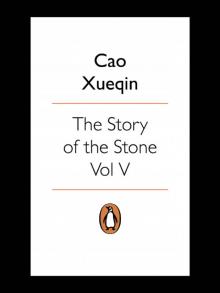 The Dreamer Wakes
The Dreamer Wakes The Warning Voice
The Warning Voice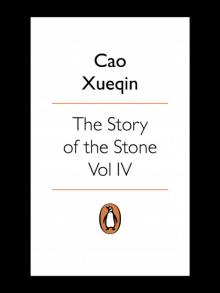 The Debt of Tears
The Debt of Tears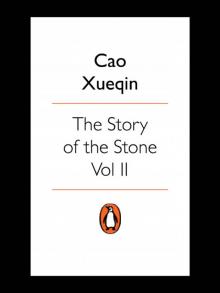 The Crab-Flower Club
The Crab-Flower Club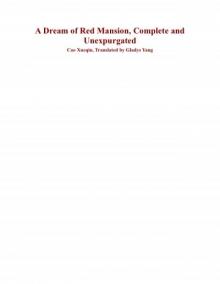 A Dream of Red Mansion
A Dream of Red Mansion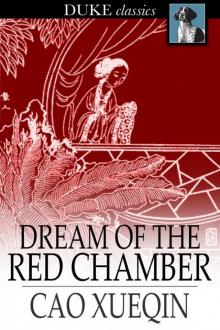 The Dream of the Red Chamber (Selection)
The Dream of the Red Chamber (Selection)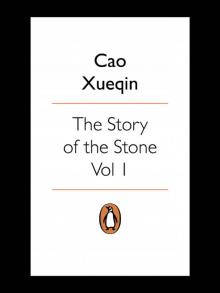 The Golden Days
The Golden Days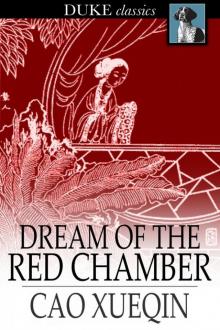 The Dream of the Red Chamber
The Dream of the Red Chamber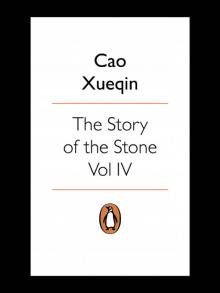 The Story of the Stone
The Story of the Stone